I've driven the retro-inspired Renault 4 E-Tech and it's just as fun as the R5... but with added practicality
Renault avoids difficult 'second album syndrome' with another ace EV
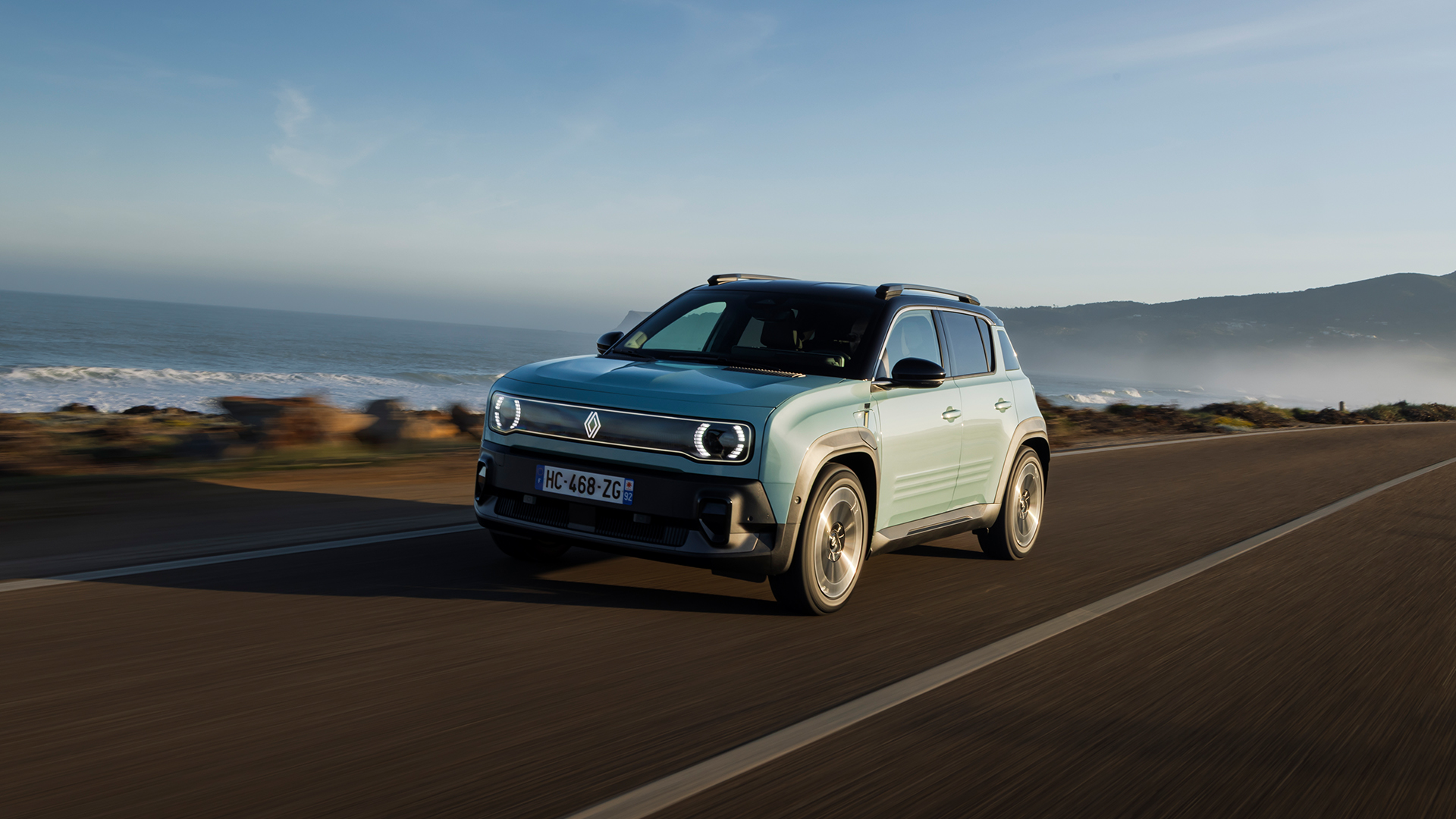
Renault is planning to expand its global operations, not just to house an influx of employees and to increase production, but also to make room for all of the awards the R5 E-Tech has been winning lately.
Triple 'Car of the Year', the best-selling EV in France (and recently the UK) and hoarder of myriad local market silverware, the retro-inspired R5 EV has been a runaway success for the French brand – a tantalizing blend of character, a fun driving experience and, perhaps more importantly, a shockingly affordable price tag.
However, the altogether more rotund and practical Renault 4 of the early 1960s is actually the best-selling vehicle the marque has ever produced.
Its low trunk sill, masses of interior roominess and workhorse mentality ensured it was a firm favorite with everyone from French farmers to free-spirited hippies over the four decades it was on sale.
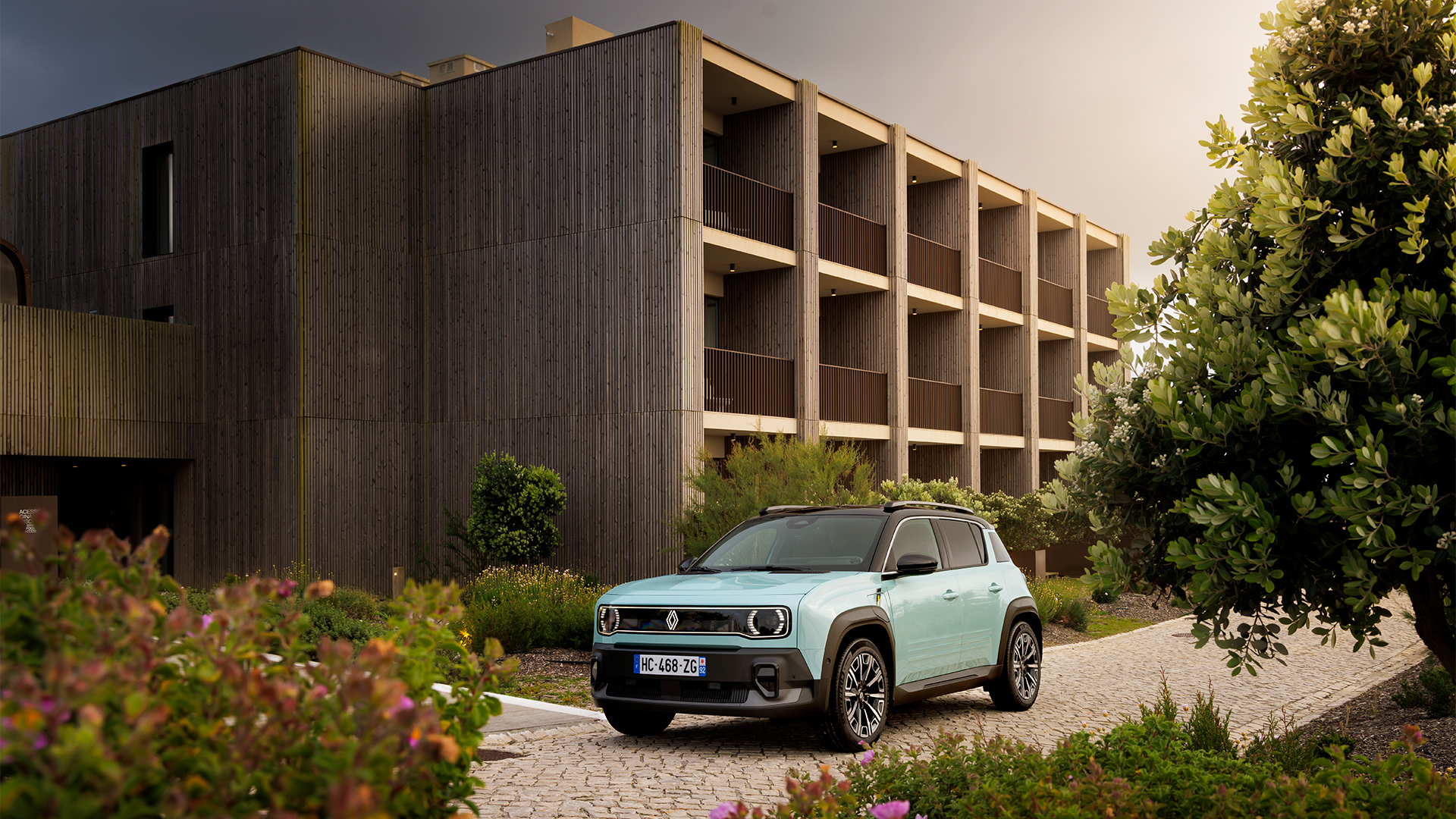
So, how does Renault replicate the success of its neo-retro R5 and the most practical and popular model in its history? Well, it sticks to its tried-and-tested methods by borrowing most of the electric underpinnings from said R5, adding a touch of additional interior space and plundering its back catalogue for design inspiration.
If it ain’t broke, don’t fix it, eh? But following the astronomical success of the R5, the Renault 4 E-Tech will always have a tough act to follow. Can Renault do the double, or does the 4 lack the spark to capture buyer’s attentions?
After driving the Renault 4 on the winding routes of Portugal, it appears the French marque may well be putting champagne on ice once again.
Sign up for breaking news, reviews, opinion, top tech deals, and more.
More room, but more money
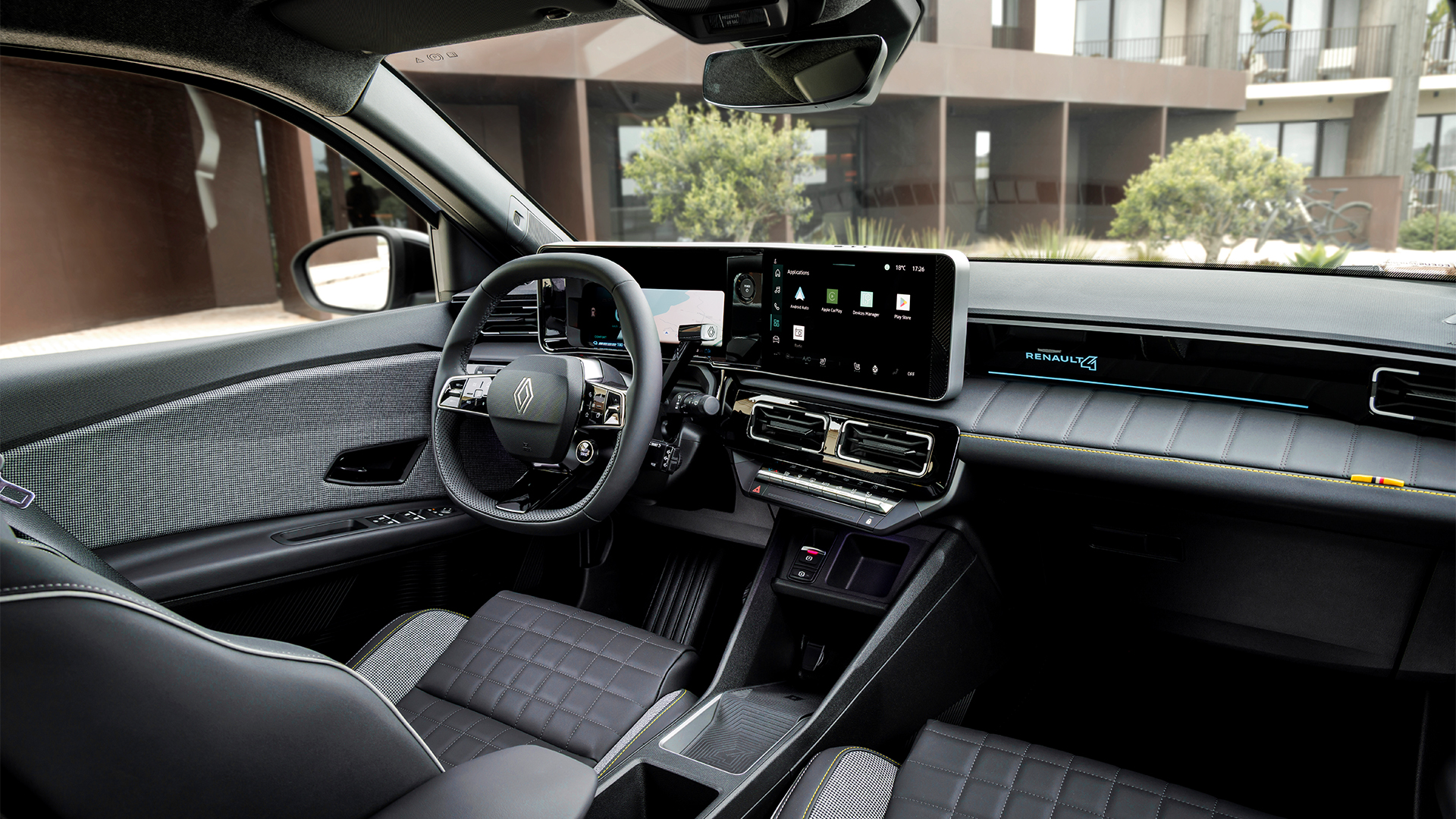
The slightly extended width and wheelbase of the Renault 4 means interior occupants get more head and legroom. While it is perfectly possible to transport five adults in a Renault 5, they will be a lot more comfortable in the 4.
It was never going to be easy to follow the R5 (and its brilliant Turbo version), but Renault has done a great job differentiating the two electric models.
There’s also a 420-liter trunk, which rises to 1,405 liters when the rear seats are folded flat. Renault designers have also added lots of handy straps, lashing points and cubby holes for transporting awkward or delicate items.
The original Renault 4 had one of the lowest trunk or boot sills in the business, which made loading all sorts of bulky stuff much easier. Hence it becoming popular with those that transported livestock during the week and the family at the weekend.
Naturally, the modern electric version has replicated this (maybe not the livestock stuff) with an easy-to-access load space and lots of room.
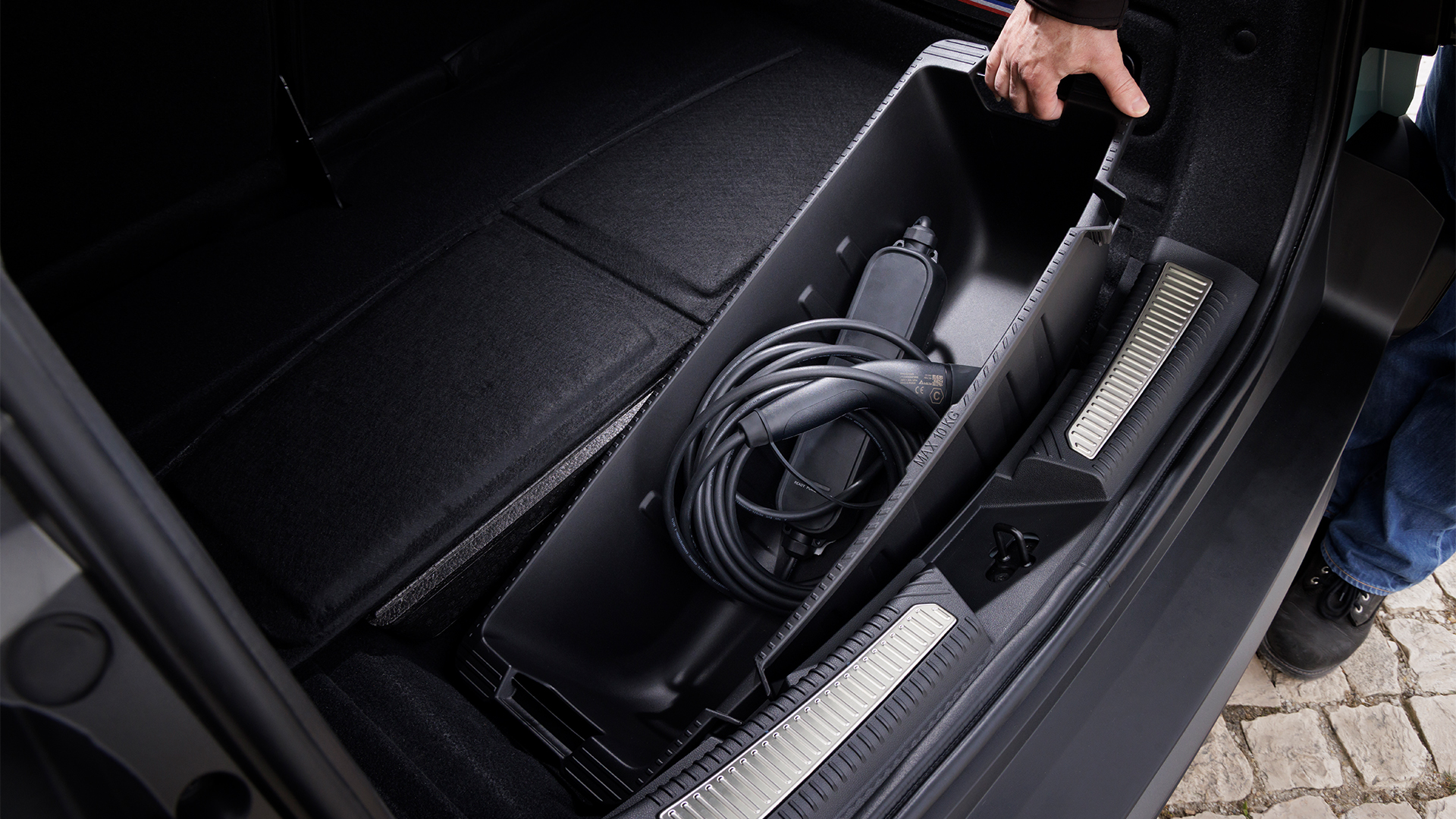
The raised ride height, chunkier bodywork and added interior roominess means Renault is asking more for the Renault 4, but it’s not an eye-watering amount. In fact, the simple three-trim line-up (evolution, techno and iconic) is exactly £2,500 / €2,500 (or about $3,200 / AU$5,200) more expensive than its R5 E-Tech counterpart.
So, prices are expected to start at around £27,000 and rise to £31,000 in the UK , which is around $36,000 / AU$56,000 and $41,000 / AU$64,000 in North America and Australia. Although, unfortunately, Renault won’t be shipping to those markets anytime soon.
Considering the specification, looks and drive, it puts it in a highly competitive position against rivals, which include alternatives like the Fiat 600, Jeep Avenger and Mini Aceman.
Dares to be different
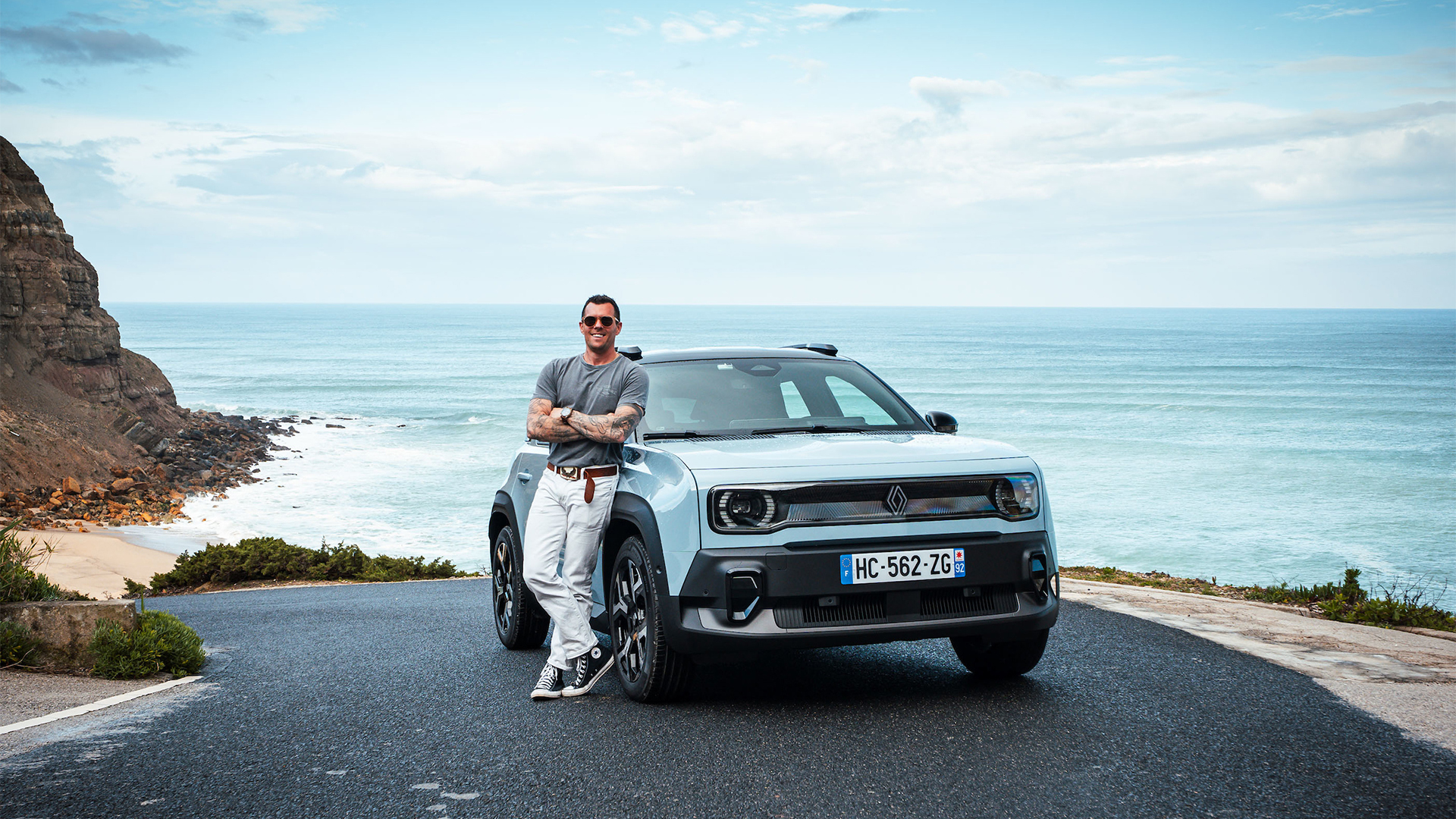
The nods to the original Renault 4 are a little more “squint hard and you can see them” than they are in the R5 E-Tech, but that’s not to say this EV is dull or homogenous – far from it, in fact.
Standout design touches include the illuminated front grille, which is a 1.45m long single piece, the first of its kind in the industry. The original car’s three-part rear lights have been given a modern makeover and three ridge lines sculpted into the flanks ensure you won’t mistake it for an R5. It's altogether chunkier, wearing its SUV credentials well.
Arguably the biggest talking point is the famous “plein sud” fabric roof of the original car, which essentially peels back to transform the R4 into a cut-price convertible. In France, plein sud is loosely translated to “south-facing”, or the ideal garden position for sunbathing, in other words.
Today’s massive fabric opens at the touch of a button, or via a simple voice command thanks to the Reno AI-powered voice assistant. The feature is an option on techno models and above, but unfortunately, it is arriving later this year, so I didn’t get to test it on sunny Portuguese routes.
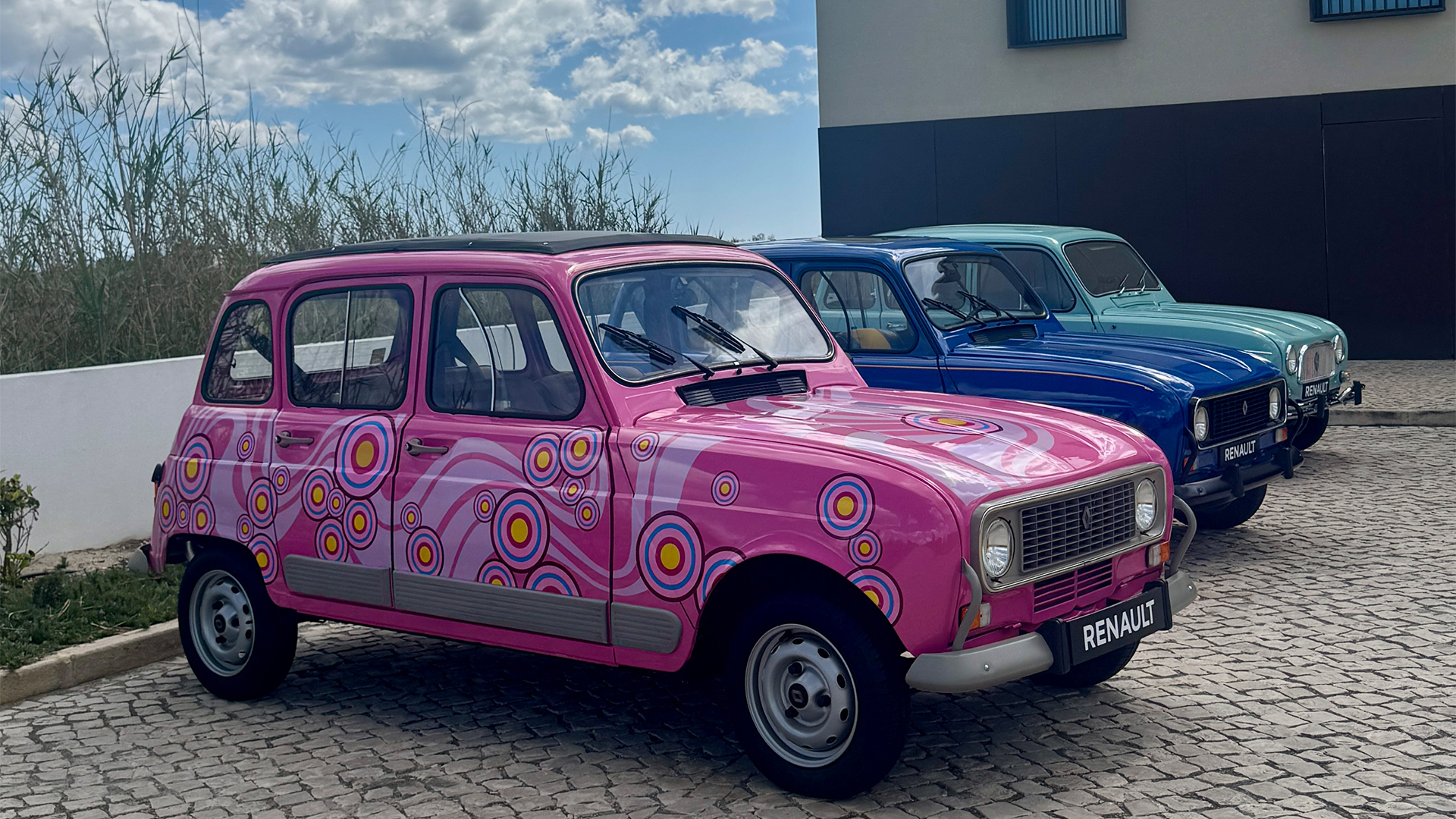
However, the interior remains a delight, with a denim-style fabric covering most surfaces and lending the new Renault 4 a haute couture finish.
Standout design touches include the illuminated front grille, which is a 1.45m long single piece, the first of its kind in the industry.
The 10.1-inch OpenR Link Android Automotive touchscreen is simple but effective, offering a bunch of downloadable apps, as well full support for Apple CarPlay and Android Auto.
As with the R5, there are plenty of funky features that stand this model out from an increasingly bland crowd.
The gear selector cap can swapped out for a number of designs, there are 3D-printed covers for the center console and yes, you can specify the baguette holder. Brilliant.
Plus, Renault has introduced Vehicle-to-Load (V2L) technology, which allows owners to charge laptops, eBikes and power all manner of camping kit from the car.
This is practically unheard of at the Renault 4 E-Tech's price point, with only Kia and Hyundai touting the tech for a similar price.
Practical but still fun
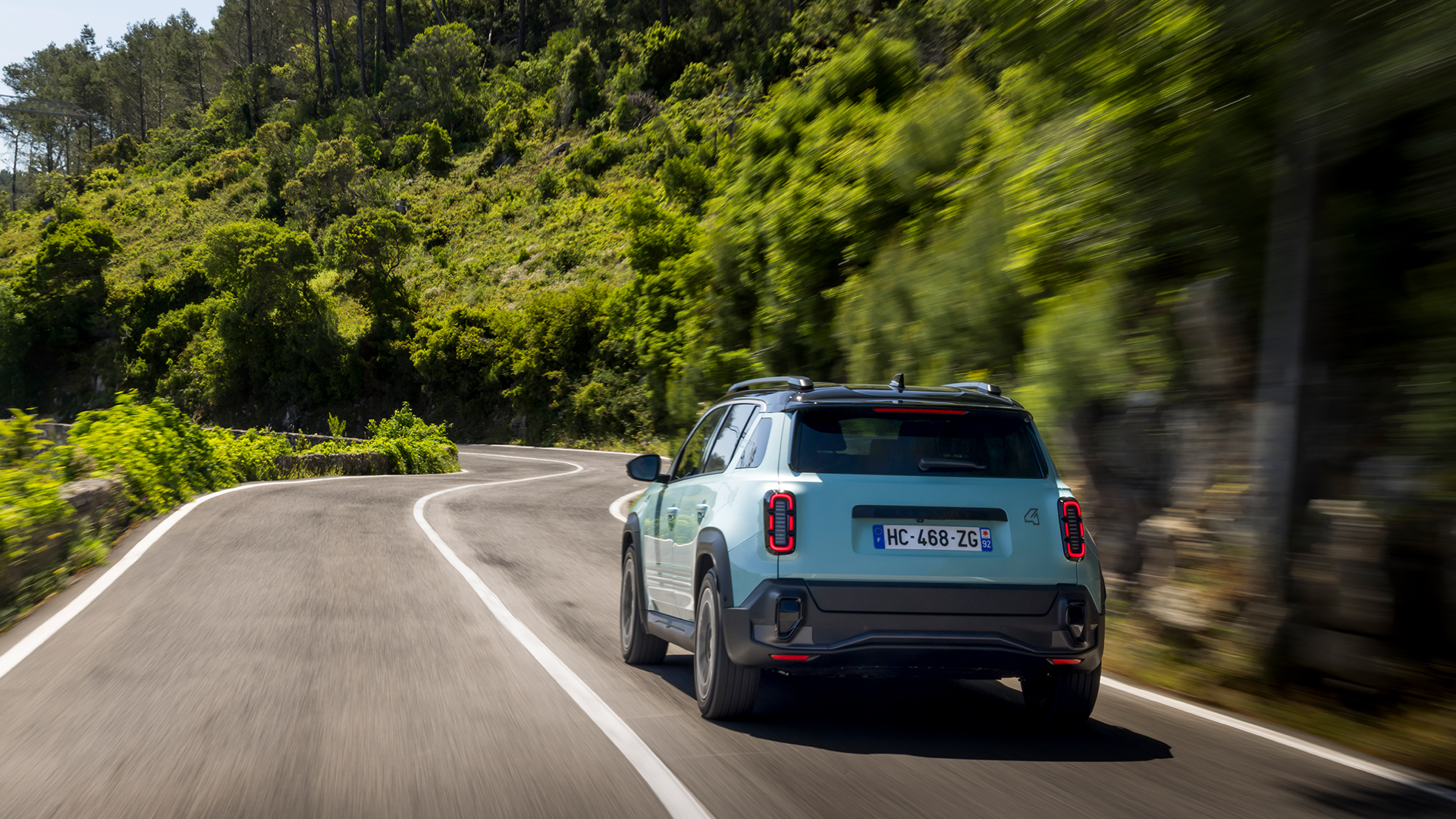
In most European markets, the Renault 4 will come with the same, larger lithium-ion NMC 52kWh battery pack as the more expensive Renault 5 E-Tech models, which offers a driving range of around 250 miles and 100kW DC fast-charging for a 10 to 80% battery charge in 30 minutes.
The electric motor is good for 150hp, which equates to a 0-62mph sprint time of a respectable 8.2 seconds and a top speed of 93mph. These aren’t ground-breaking figures, but the Renault 4 E-Tech certainly feels sprightly on the road.
Plant the throttle on a tight corner and the front wheels squirm for grip. There’s a little torque steer like the hot hatches of yesteryear, but the chassis and suspension set-up is perfectly for tackling twisty routes.
However, it happily settles down into a quiet and comfortable cruiser when not driven hard. Above all else, it packs all of the character of its R5 sibling, just in a slightly roomier and more comfortable package.
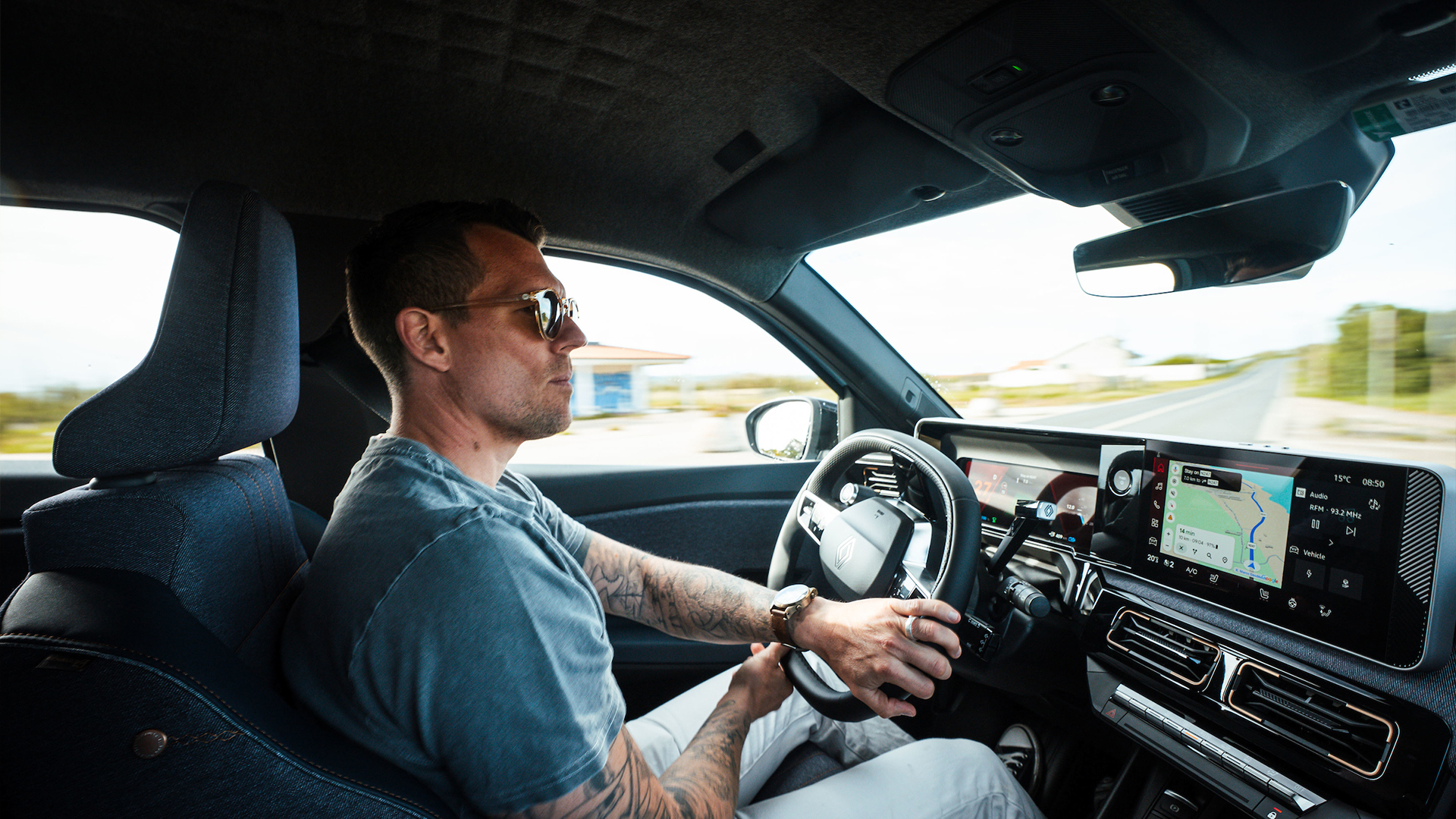
For the first time, Renault has also introduced true on-pedal driving thanks to the adjustable levels of regenerative braking. Like many EV rivals, the driver can pull the paddles mounted to the steering wheel to increase or decrease regen levels.
When set to maximum, it is possible to drive most routes using just the throttle pedal. It also mimics heavy engine braking, making the overall drive a little more engaging.
Why the French marque decided to debut this feature on the more practical Renault 4 is slightly baffling, but it’s likely to arrive in updated Renault 5 E-Tech models in the future anyway.
Running out of retro
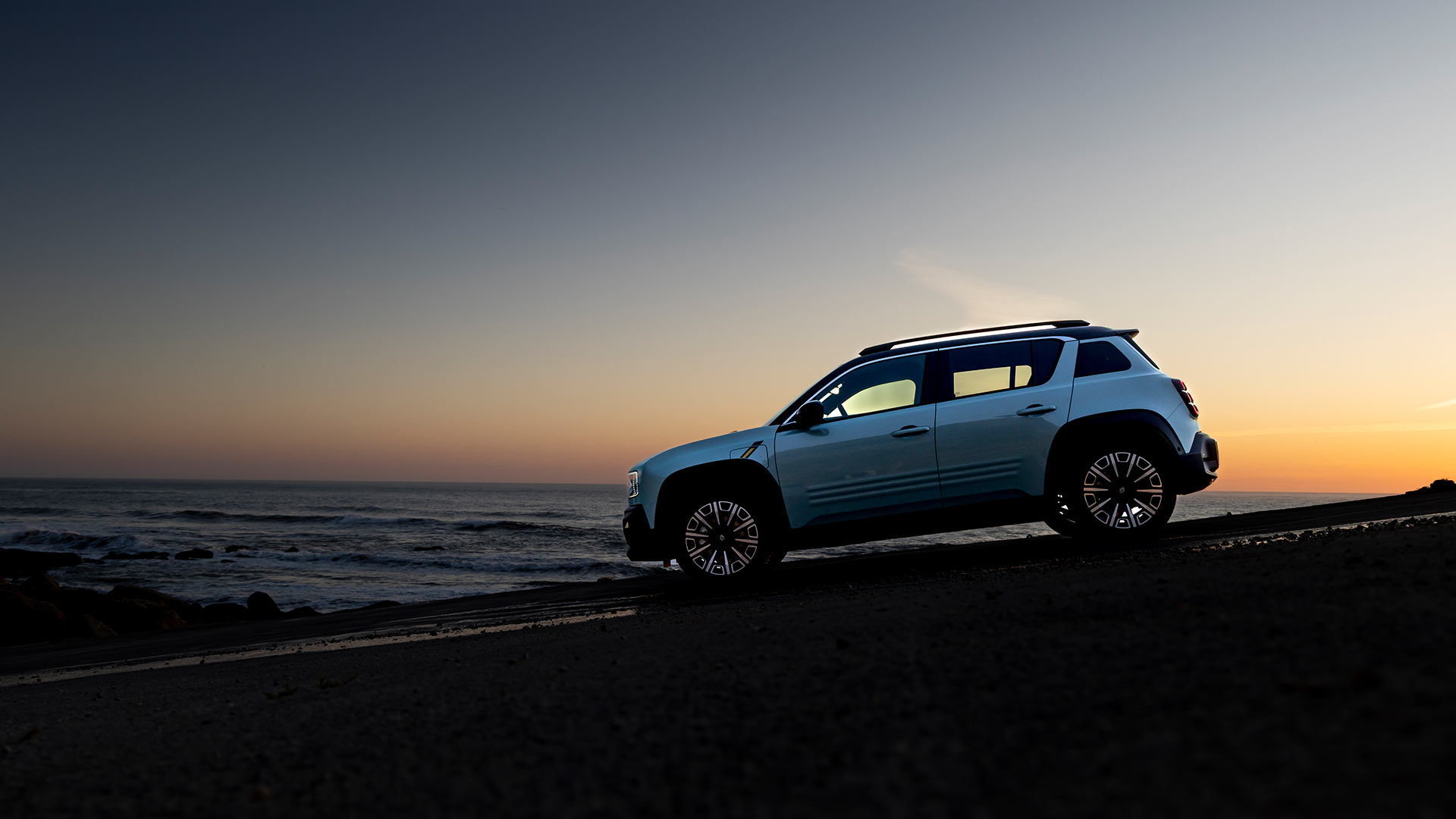
It was never going to be easy to follow the R5 (and its brilliant Turbo version), but Renault has done a great job differentiating the two electric models, with the R4 aimed at those who like the slightly raised driving position and added bodywork beef of an SUV.
However, the characterful drive and enticing asking price of the R5 E-Tech still exist, just with a few more cubby holes to store stuff.
The question probably shouldn't have been “can Renault do the double” with the R4, but more “where can the brand go next?”... because a third successful retro-inspired EV seems like a tricky task.
You might also like
- The Citroen Ami sheds its doors and roof for one of the simplest and cheapest EV experiences around
- First Slate Auto and now Isuzu – why electric pick-up trucks could be the next big EV battleground
- I’ve driven the Porsche Macan EV – and it shows why the classic brand should stick to its electric guns

Leon has been navigating a world where automotive and tech collide for almost 20 years, reporting on everything from in-car entertainment to robotised manufacturing plants. Currently, EVs are the focus of his attentions, but give it a few years and it will be electric vertical take-off and landing craft. Outside of work hours, he can be found tinkering with distinctly analogue motorcycles, because electric motors are no replacement for an old Honda inline four.
You must confirm your public display name before commenting
Please logout and then login again, you will then be prompted to enter your display name.